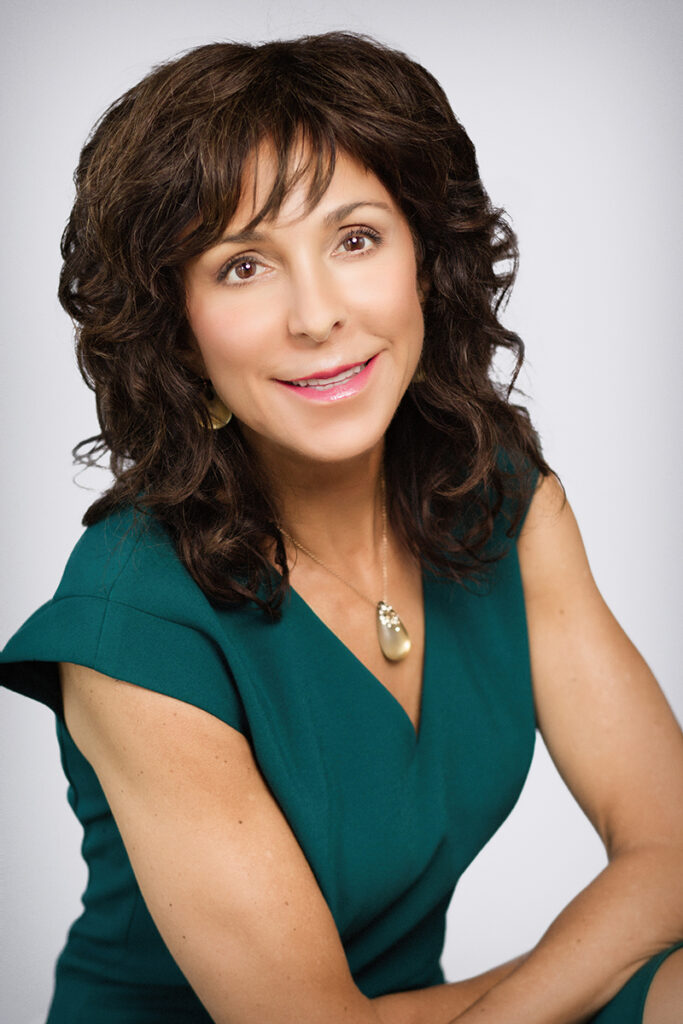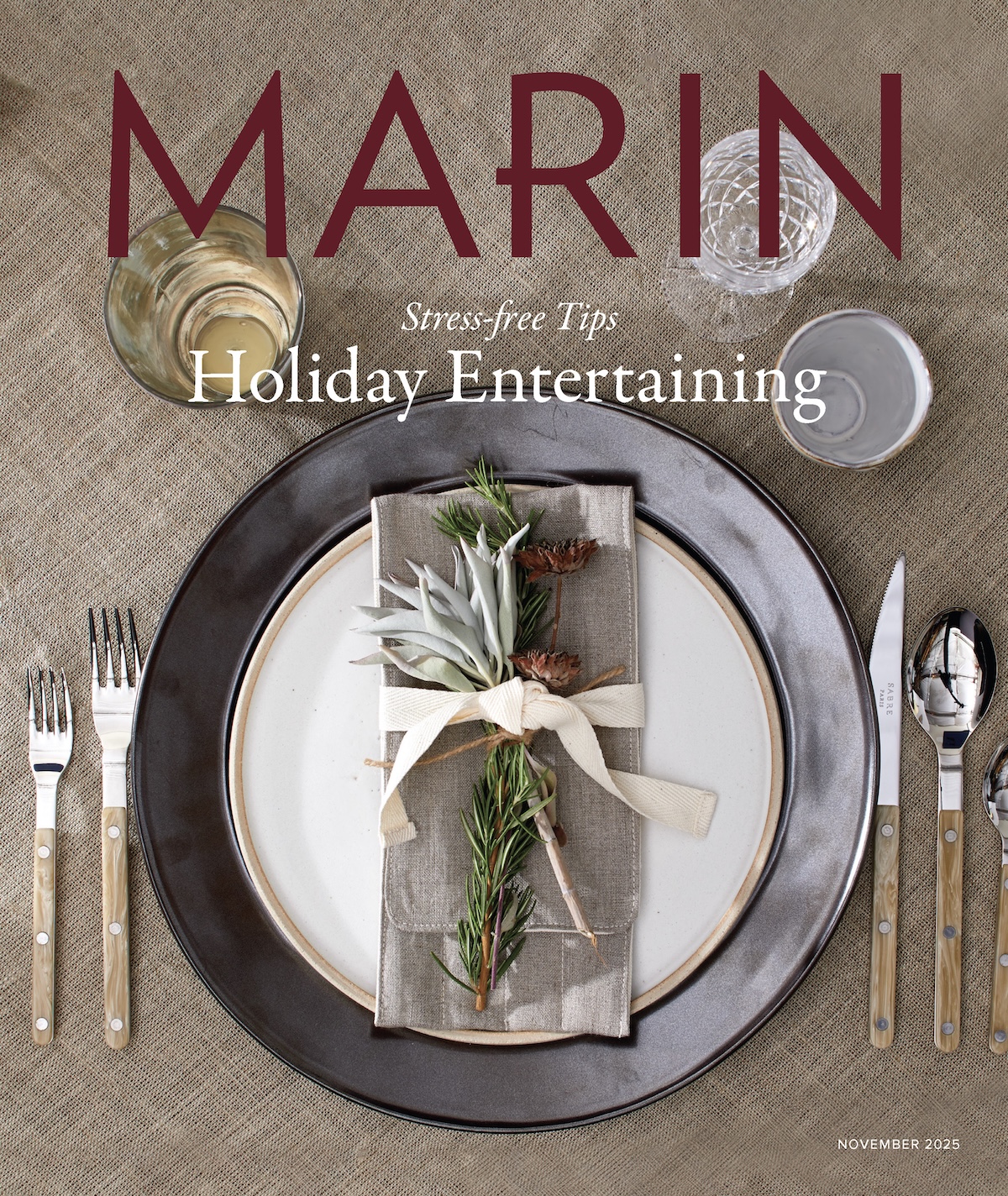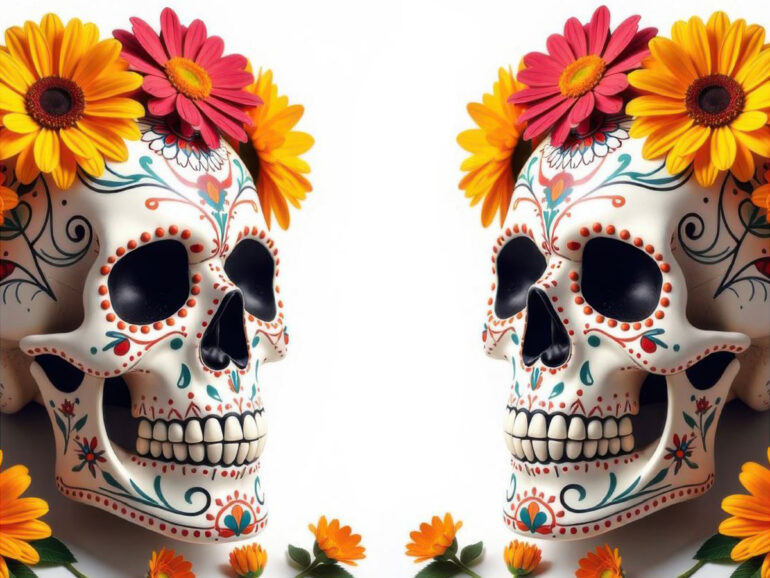In my Mexican family, as in so many others, death has always been a natural part of life. The veil between this world and the next is thin, woven with mystery, ritual and love. Popular films like Coco and The Book of Life offer a glimpse of how we honor and remember our ancestors. What is often overlooked, however, even in these traditions, is the tender and difficult process of dying itself — both for the individual and their loved ones.
This is where a death doula steps in.
When my sister Penny died at age 11, neither she nor my family and I had the support of an end-of-life doula to guide us through her final weeks and days. For her short life, Penny was nonverbal, endured daily seizures and lived with pain. Because of a brain infection at four months old, she suffered from spasticity, her muscles perpetually locked into tight fists.
At the time I was 18 and unequipped for the uncomfortable feelings that veered recklessly through me at her funeral. When she was alive I was impatient and resentful. But now that she was dead a bitter mix of guilt, relief and remorse took over.
Penny’s death was not the end of her story, but rather it was the end of her suffering. Yet, even today, I wonder whether a death doula could have helped not just me, but my family and Penny, navigate what was to come.
An Ancient Practice in Modern Times
A death doula is a guide and companion — someone who helps individuals and families navigate the final chapter of life with presence, compassion and care. These practitioners provide individuals and families with holistic support — emotional, practical and spiritual. They may guide end-of-life planning, sit vigil, help create legacy projects, or offer a listening ear. They support not just the one who is dying, but also the circle of loved ones who grieve.
According to the Crossover Doula Services (CDS), the practice of “death doula” is an ancient one that was considered a “natural part of life.” More recently, the movement gained traction in North America and Europe in the early 2000s, according to the CDS. At this point, international and national training programs and organizations such as International End-of-Life Doula Association (INELDA) and National End-of-Life Doula Alliance (NEDA) began to shape professional standards. Communal care started to take on a more recognized role in modern healthcare.
While there are “no firm statistics on how many end-of-life doulas exist,” according to a Fortune magazine article from 2024, the publication reported that, as of January of the same year, NEDA membership was 1,545, up from 250 in 2019. The same article cited that INELDA also saw its membership nearly double from 648 to 1,162, between 2018 to 2023.
This rise of interest in death doulas may reflect a longing many of us feel: to bring death back into the realm of human connection, ritual and meaning. In choosing a doula, families are choosing to honor death as part of life itself.
Dr. Tasha Faruqui: Living Without Answers

For pediatrician Dr. Tasha Faruqui, death’s lessons arrived through her daughter’s undiagnosed illness. At five months, her daughter Soraya failed a swallow study, confirming she was aspirating. Tests for rare genetic disorders yielded no answers.
For years, the family lived in medical limbo, juggling feeding tubes, therapy sessions and specialists. At nine, Soraya’s health began to shift. Her chest muscles weakened; she required ventilation. At 10, she declined a tracheostomy, insisting she’d rather live fully than risk losing her voice.
That Christmas, she asked her parents to tell her the truth. With guidance from hospice counselors, they did. Her screams of grief gave way to acceptance. “From that day forward, there were no more secrets,” Tasha says.
Now 13, Soraya uses a ventilator and wheelchair, but she insists on joy — calling herself an “eternal soul,” reporting visions of departed loved ones and embracing each day. “As parents, the heartbreak is constant,” Tasha admits. “But she teaches us how to live.”
Her debut book, Keep Your Head Up, gives voice to families of children with terminal illnesses. Written with raw honesty, it offers tools for transparency, comfort and resilience. “No family should have to face this,” she says. “But if they do, they deserve community and hope.”
Follow her and her family on Instagram @thefaruqui5.
She will be hosting a book signing at George Mark Children’s House on October 23, with all proceeds benefiting the house.
What Matters Most

Diane Button’s relationship with death began early. At 15, she volunteered as a caregiver in a convalescent home, where she learned the quiet power of sitting with people at the end of their lives. Later, she worked in a hospital emergency room, volunteered in hospice care and earned a master’s degree in counseling psychology. These experiences at the border of life and death shaped her path toward becoming an end-of-life doula, a vocation she has now embraced for nearly two decades.
Throughout the years, Button found her own life transformed by the words of the dying, and their reflections inspired her to share their voices more widely. In 2022, she published her essay 10 Lessons the Dying Teach Us About Living in Maria Shriver’s Sunday Paper. Her piece went viral and became the foundation for her recently-published book What Matters Most.
“Death and dying can sound frightening,” Button says, “but these stories are uplifting, joyful and deeply human. They teach us more about life than about death.”
Today, she is a founding partner of the Bay Area End-of-Life Doula Alliance and teaches in the University of Vermont’s End-of-Life Doula Professional Certificate Program. Her work is guided by presence, deep listening and a belief that death is not an ending to dread, but a sacred passage to honor.
Gentle Guidance Through Goodbye

For Christine Comaford, her path to becoming a death doula began not at a bedside, but on her own hospital gurney. Twice — in 1991 and 1995 — she faced possible cancer diagnoses. Years of Buddhist practice allowed her to ask: If this is my time, have I lived as I wanted? Though the scares were benign, the questions endured.
By 1998 she began hospice training at Jerry Jampolsky’s Center for Attitudinal Healing, and later expanded her expertise through Hospice of Napa Valley, By the Bay Health, and obtained an INELDA certification.
Comaford’s approach is both practical and profoundly human. Pain management comes first so families can be present, not overwhelmed. Beyond the physical, she guides clients through her FRUGS process — Forgiveness, Regrets, Unfinished Business, Guilt and Shame — helping them release burdens and find peace. One of her earliest clients, a retired officer with AIDS, reconciled with his estranged son before death, leaving behind words of love Comaford was able to deliver.
Today, Comaford is a sought-after doula in Marin. She has led Death Cafés, assisted the Dalai Lama, and coached world leaders, yet remains devoted to the sacred intimacy of the deathbed. “Dying,” she says, “is the last act of living. It can be the most conscious, loving experience of a lifetime — if we allow it.”
Honoring Life’s Final Passage with Love, Presence and Meaning
What unites the work that practitioners like Button and Comaford do is the belief that dying is not merely a medical event, but a deeply human experience. At the heart of their work are ritual, creating space and honoring feelings — tools that allow both the dying and their loved ones to move through the process with dignity.
“Over and over, the dying tell me: love is most important,” says Button. Her words echo the countless stories gathered at the bedside, where grief and beauty are often intertwined.
The cruel deception about death is that even though we know it’s inevitable, when it arrives, we’re not always ready for it. That was the case with my sister. While we all knew that she would die one day, when that day came, it was tough. I was bombarded with guilt for not wanting to spend more time with her, regret for my resentment of her neediness, and with sadness that she never got to live a full and complete life.
This is where the guidance of a death doula could have made a difference. With her support, my family and I might have been more prepared for the emotional terrain of her dying. I could have shared my conflicted feelings openly, gained perspective on the meaning of her life and received reassurance that my love had been enough. Without that presence, I carried the weight of her life and her death alone for years.
Whether in a pediatric hospice, a quiet living room or a flower-filled bedroom, the lesson repeats: life is fragile, grief is layered and love endures. Death doulas remind us that the final chapter is not only about dying, but about living fully and consciously until the very last breath.
Resources to Help the Grieving Process
For Young Children
- The Invisible String (Patrice Karst) — Explains how love continues even after death.
- Play & Art Therapy — Drawing, role-playing and storytelling help kids process feelings safely.
For School-Aged Kids & Teens
- Letter Rituals — Write to a sibling, then:
- Place in a memory box
- Release on an eco-friendly balloon
- Write on dissolving paper to send through water
- Grief Camps — Programs like By the Bay Grief Camp foster healing, play, and peer connection.
For Parents
- Death Cafés throughout Marin — Reduce isolation, offer hope and build resilience.
- Continuing Bonds Practices
- Create memory boxes, photo albums, art projects
- Visit memorial spaces together (fountains, gardens, rituals)
- Encourage symbolic “signs” (sunsets, hummingbirds, butterflies)
Local Resource Highlight: George Mark Children’s House (GMCH)
This non-profit, palliative care facility is located in Alameda and provides medical care for children and their families. Patients at GMCH range from children to young adults.
GMCH was founded in 2004 by Dr. Kathleen Nicholson Hull. After working at Children’s Hospital & Research Center Oakland for more than 25 years, Dr. Hull wanted to offer something different to children with serious medical conditions. Named after Dr. Hull’s late brothers, George and Mark, the facility officially opened in 2004 and became the country’s first free standing pediatric palliative care centers. Since opening, GMCH has cared for more than 1,100 children and their families (according to its website).
Today, the facility continues to serve those with life-limiting illnesses and their loved ones.
For GMCH’s CEO Shekinah Eliassen, her journey with GMCH began in 2012 when her son, Lars, was born with microcephaly and a terminal brain malformation.
After doctors said Lars had weeks (or even days) to live, the family spent two weeks in the hospital before moving to GMCH.
“At the hospital, Lars was connected to tubes,” she recalls. “At George Mark, we could walk the gardens with him, hold him without wires.” Lars died at just 21 days old, but his short life became the catalyst for Shekinah’s calling. Today she is George Mark’s CEO.
Of GMC’s purpose, Eliassen says,“I believe so deeply in our mission, because I experienced it firsthand,” she says. “My purpose is to ensure more families have access to the dignity and peace we did.”
Supporting Someone Who Has Lost a Loved One
What to Say
- Use their loved one’s name. Acknowledge the loss directly and let them know you remember and care.
- Listen more than you speak. Sometimes, presence and quiet support mean the most.
- Offer comfort, not clichés.
What Not to Say
- Avoid phrases like “They’re in a better place” or “They lived a good life.” These can minimize their grief.
- Don’t ask about the details of how the person died.
- Don’t put the burden on them by asking “How can we help?”
Instead, Be Specific
- Offer concrete support: “I’ll bring dinner over Tuesday evening.”
- Make real, simple plans. Grieving people are often in shock and can’t coordinate their needs.
Books for Families Facing the End of Life
Guidance
- The Art of Dying Well — Katy Butler | Living fully while preparing for death
- Being Mortal — Atul Gawande | What truly matters at life’s end
- A Year to Live — Stephen Levine | A guide to living each year as if it were your last
- The Five Initiations — Frank Ostaseski | Exploring the spiritual lessons of life and death
- The Good Death — Suzanne O’Brien | Practical roadmap of what to expect
For Parents & Children
- Keep Your Head Up — Dr. Tasha Faruqui | Honest guidance for parents of terminally ill children
- The Invisible String — Patrice Karst | Enduring bonds of love
- Lifetimes — Bryan Mellonie & Robert Ingpen | Gentle explanation of life and death for kids
Spiritual & Emotional Support
- Tuesdays with Morrie — Mitch Albom | Love and wisdom from a dying mentor
- Final Gifts — Callanan & Kelley | Insights from hospice nurses
Practical Guides for Caregivers
- Dignity Therapy — Harvey Max Chochinov | Helping loved ones leave a legacy
- The Needs of the Dying — David Kessler | Emotional, spiritual, and physical care at the end
- A Beginner’s Guide to the End — BJ Miller & Shoshana Berger | Clear, compassionate roadmap
Fiction that Illuminates Grief & Mortality
- The Collected Regrets of Clover — Mikki Brammer | A death doula’s journey to understand life and love
- The Book of Two Ways — Jodi Picoult | A novel exploring choices, mortality, and the paths not taken


